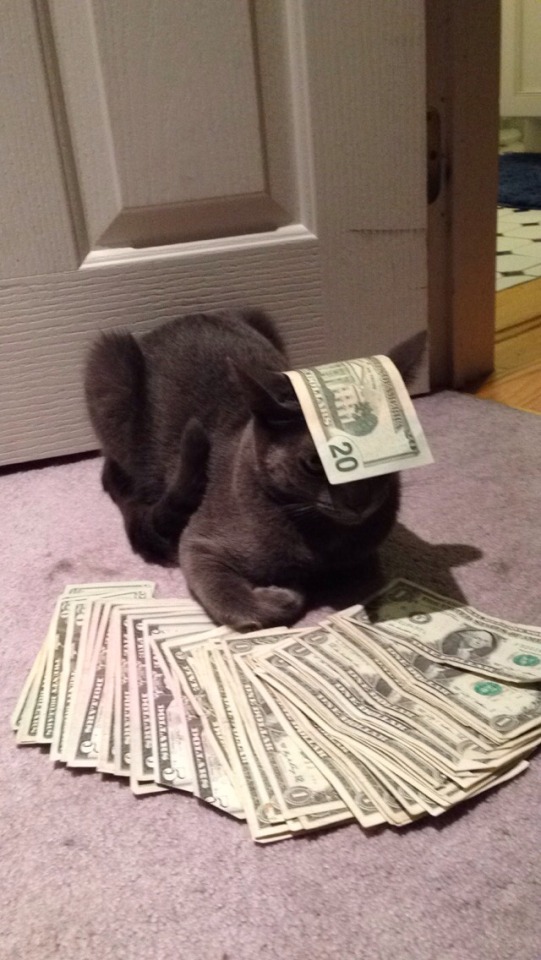So I Got Into Grad School Today With My Shitty 2.8 Gpa And The Moral Of The Story Is Reblog Those Good
so I got into grad school today with my shitty 2.8 gpa and the moral of the story is reblog those good luck posts for the love of god
More Posts from Writingwickedwitch and Others
I've been reading Iron Flame by Rebecca Yarros, and it's gotten me thinking about how worldbuilding is multilayered, and about how a failure of one layer of the worldbuilding can negatively impact the book, even if the other layers of the worldbuilding work.
I don't want to spoil the book for anyone, so I'm going to talk about it more broadly instead. In my day job, one of the things I do is planning/plan development, and we talk about plans broadly as strategic, operational, and tactical. I think, in many ways, worldbuilding functions the same way.
Strategic worldbuilding, as I think of it, is how the world as a whole works. It's that vampires exist and broadly how vampires exist and interact with the world, unrelated to the characters or (sometimes) to the organizations that the characters are part of. It's the ongoing war between Earth and Mars; it's the fact that every left-handed person woke up with magic 35 years ago; it's Victorian-era London except every twelfth day it rains frogs. It's the world, in the broadest sense.
Operational worldbuilding is the organizations--the stuff that people as a whole are doing/have made within the context of that strategic-level world. For The Hunger Games, I'd probably put the post-apocalyptic nature of the world and even the existence/structure of the districts as the strategic level and the construct of the Hunger Games as the operational level: the post-apocalyptic nature of the world and the districts are the overall world that they live in, and the Hunger Games are the construct that were created as a response.
Tactical worldbuilding is, in my mind, character building--and, specifically, how the characters (especially but not exclusively the main characters) exist within the context of the world. In The Hunger Games, Katniss has experience in hunting, foraging, wilderness survival, etc. because of the context of the world that she grew up in (post-apocalyptic, district structure, Hunger Games, etc.). This sort of worldbuilding, to me, isn't about the personality part of the characterization but about the context of the character.
Each one of these layers can fail independently, even if the other ones succeed. When I think of an operational worldbuilding failure, I think of Divergent, where they took a post-apocalyptic world and set up an orgnaizational structure that didn't make any sense, where people are prescribed to like 6 jobs that don't in any way cover what's required to run a modern civilization--or even to run the society that they're shown as running. The society that they present can't exist as written in the world that they're presented as existing in--or if they can, I never could figure out how when reading the book (or watching the film).
So operational worldbuilding failures can happen when the organizations or societies that are presented don't seem like they could function in the context that they are presented in or when they just don't make any sense for what they are trying to accomplish. If the story can't reasonably answer why is this organization built this way or why do they do what they do then I see it as an organizational worldbuilding failure.
For tactical worldbuilding failures, I think of stories where characters have skillsets that conveniently match up with what they need to solve the problems of the plot but don't actually match their background or experience. If Katniss had been from an urban area and never set foot in a forest, it wouldn't have worked to have her as she was.
In this way (as in planning), the tactical level should align with the operational level which should align with the strategic level--you should be able to trace from one to the next and understand how things exist in the context of each other.
For that reason, strategic worldbuilding failures are the vaguest to explain, but I think of them like this: if it either 1) is so internally inconsistent that it starts to fall apart or 2) leaves the reader going this doesn't make any sense at all then it's probably failed.

This is money cat. He only appears every 1,383,986,917,198,001 posts. If you repost this in 30 seconds he will bring u good wealth and fortune.
YOU GONNA FUCK MY WIFE?
YOU GONNA CUCK ME????
IM GONNA CUCK YOU GOMEZ. GONNA FUCK YOUR WIFE. YOU CAN WATCH WITH YOUR HAUNTED BEADY LITTLE EYES.
Wouldn’t it have made more sense to make multiple tiefling figures based off the combinations from the table that allowed you to randomize your tiefling’s appearance? Having a wider variety of what one species could look like to incentivize people to buy a wider range while allowing greater creativity and not meddling with previously established lore.
If you’re wondering what the whole drama regarding tieflings is in the Dungeons & Dragons fandom: basically, capitalism ruined tieflings, and for once that’s not even slightly a joke.
Tieflings were first introduced as a playable species in Dungeons & Dragons 2nd Edition, via the Planescape campaign in 1994. At the time, there were no particular rules regarding what a tiefling was supposed to look like. The text explicitly stated that their basic physiology could vary wildly depending on what their fiendish ancestor was, and one of the first major Planescape supplements even included a table for randomly generating your tiefling’s appearance, if you were into that sort of thing.
This continued to be the case up through the game’s Third Edition. However, when the Fourth Edition rolled around in 2008, the game’s text suddenly became very particular about insisting that all tieflings looked pretty much the same. Some campaign settings even provided iin-character explanations for why all tieflings now had a standardised appearance. Understandably, this made a lot of people very annoyed.
There was naturally a great deal of speculation concerning what had motivated this change. It was widely cited as “proof” that Dungeons & Dragons was trying to appeal to the World of Warcraft fanbase – which was nonsense, of course; nearly all of the Fourth Edition’s allegedly MMO-like features were things that popular MMOs had borrowed from Dungeons & Dragons in the first place, and to the extent that tieflings’ new look resembled a particular WoW race, it was in that they were both extraordinarily generic.
In reality, it was a change that had been lurking for some time. Though Dungeons & Dragons is directly published by Wizards of the Coast, Wizards of the Coast is in turn owned by Hasbro, and Hasbro has long regarded the D&D core rulebooks as a vehicle for promoting D&D-branded merch – in particular, licensed miniature figures.
This was a bugbear that had reared its head before. When the Third Edition received major revisions in 2003, Hasbro corporate had ordered the game’s editors to completely remove any discussion of how to improvise minifigs for large battles, and replace it with an advertisement for the then-current Dungeons & Dragons Heroes product line. Implying that purchasing licensed minis wasn’t 100% mandatory simply would not do.
If you’ve gotten this far, you’ve probably already guessed where this is going: tieflings having no standard appearance made it difficult to sell tiefling minifigs, as any given minifig design would only be suitable for a small subset of tiefling characters. In the brutally reductive logic of the corporate mind, Hasbro reasoned: well, if we tell tiefling players that all of their characters now look the same, we can sell them all the same minifigs. So that’s what the game did, going so far as to write justifications into several published settings for magically transforming all existing tiefling characters to fit the new mould!
This worked about as well as anyone who isn’t a corporate drone would naturally anticipate – and that’s the story of how capitalism ruined tieflings.
By the way, you can improve your executive function. You can literally build it like a muscle.
Yes, even if you're neurodivergent. I don't have ADHD, but it is allegedly a thing with ADHD as well. And I am autistic, and after a bunch of nerve damage (severe enough that I was basically housebound for 6 months), I had to completely rebuild my ability to get my brain to Do Things from what felt like nearly scratch.
This is specifically from ADDitude magazine, so written specifically for ADHD (and while focused in large part on kids, also definitely includes adults and adult activities):

Here's a link on this for autism (though as an editor wow did that title need an editor lol):

Resources on this aren't great because they're mainly aimed at neurotypical therapists or parents of neurdivergent children. There's worksheets you can do that help a lot too or thought work you can do to sort of build the neuro-infrastructure for tasks.
But a lot of the stuff is just like. fun. Pulling from both the first article and my own experience:
Play games or video games where you have to make a lot of decisions. Literally go make a ton of picrews or do online dress-up dolls if you like. It helped me.
Art, especially forms of art that require patience, planning ahead, or in contrast improvisation
Listening to longform storytelling without visuals, e.g. just listening regularly to audiobooks or narrative podcasts, etc.
Meditation
Martial arts
Sports in general
Board games like chess or Catan (I actually found a big list of what board games are good for building what executive functioning skills here)
Woodworking
Cooking
If you're bad at time management play games or video games with a bunch of timers
Things can be easier. You do not have to be stuck forever.


Mac recommending mc Batwoman is the highlight of my week
Bonus:

look at all the “comic books”
This is such an awesome analysis!
How to use in-betweens and arcs: A study of Rue and Duck’s pas-de-deux in “Princess Tutu”
This is based on a little talk I gave to students during a one-week animation crash course at Cambridge a few months ago. The project was to create a character and animate it performing a simple looping dance. I first briefed them on the very beginnings of the process, looking at reference and collecting research materials to inform their creative choices, and explained and demonstrated the basic tools they needed to use, including keyframing, in-betweening, and timing. Then I showed them this clip from Princess Tutu on the morning before they actually started drawing their animations.
I used this bit in particular because I thought it was a really accessible way to demonstrate a key difference between communicating with moving image compared to still image. While many of the same principles apply (in particular, to your keyframes, which I’d already done my best to drum into them), the in-betweens can carry a lot of weight and really change how the action reads.
Keep reading
-
 renegadesolos reblogged this · 1 week ago
renegadesolos reblogged this · 1 week ago -
 i-should-probably-get-out-more reblogged this · 1 week ago
i-should-probably-get-out-more reblogged this · 1 week ago -
 fan-atik reblogged this · 1 week ago
fan-atik reblogged this · 1 week ago -
 fan-atik liked this · 1 week ago
fan-atik liked this · 1 week ago -
 lightyagamis-lefttitty reblogged this · 1 week ago
lightyagamis-lefttitty reblogged this · 1 week ago -
 sugadrms liked this · 1 week ago
sugadrms liked this · 1 week ago -
 cate-planchette reblogged this · 1 week ago
cate-planchette reblogged this · 1 week ago -
 clearly-mossy reblogged this · 1 week ago
clearly-mossy reblogged this · 1 week ago -
 gayhorse3000 reblogged this · 1 week ago
gayhorse3000 reblogged this · 1 week ago -
 gayhorse3000 liked this · 1 week ago
gayhorse3000 liked this · 1 week ago -
 indoorsonlycat reblogged this · 1 week ago
indoorsonlycat reblogged this · 1 week ago -
 midnight-express reblogged this · 1 week ago
midnight-express reblogged this · 1 week ago -
 kitsunekat9 reblogged this · 1 week ago
kitsunekat9 reblogged this · 1 week ago -
 mydreamhomewithfivecats reblogged this · 1 week ago
mydreamhomewithfivecats reblogged this · 1 week ago -
 coolranchdoritochipss liked this · 1 week ago
coolranchdoritochipss liked this · 1 week ago -
 ganmo reblogged this · 1 week ago
ganmo reblogged this · 1 week ago -
 rhymes-with-smurf reblogged this · 1 week ago
rhymes-with-smurf reblogged this · 1 week ago -
 refugerefugees256 liked this · 1 week ago
refugerefugees256 liked this · 1 week ago -
 catchcrows reblogged this · 1 week ago
catchcrows reblogged this · 1 week ago -
 bluemoonscape liked this · 1 week ago
bluemoonscape liked this · 1 week ago -
 clearly-mossy reblogged this · 1 week ago
clearly-mossy reblogged this · 1 week ago -
 happilysoangel liked this · 1 week ago
happilysoangel liked this · 1 week ago -
 shivadraw reblogged this · 1 week ago
shivadraw reblogged this · 1 week ago -
 shrimpothy reblogged this · 1 week ago
shrimpothy reblogged this · 1 week ago -
 shrimpothy liked this · 1 week ago
shrimpothy liked this · 1 week ago -
 severely-gay reblogged this · 1 week ago
severely-gay reblogged this · 1 week ago -
 severely-gay liked this · 1 week ago
severely-gay liked this · 1 week ago -
 ray-totoro reblogged this · 1 week ago
ray-totoro reblogged this · 1 week ago -
 bastetwrites reblogged this · 1 week ago
bastetwrites reblogged this · 1 week ago -
 bastetwrites liked this · 1 week ago
bastetwrites liked this · 1 week ago -
 p1ayer0001 reblogged this · 1 week ago
p1ayer0001 reblogged this · 1 week ago -
 dontmindme-imjustfangirlin reblogged this · 1 week ago
dontmindme-imjustfangirlin reblogged this · 1 week ago -
 sapphiim reblogged this · 1 week ago
sapphiim reblogged this · 1 week ago -
 andrcmeda liked this · 1 week ago
andrcmeda liked this · 1 week ago -
 cakelovaaaa reblogged this · 1 week ago
cakelovaaaa reblogged this · 1 week ago -
 theorajones reblogged this · 1 week ago
theorajones reblogged this · 1 week ago -
 leapingrecord liked this · 1 week ago
leapingrecord liked this · 1 week ago -
 hellacutebirthdaysuit reblogged this · 1 week ago
hellacutebirthdaysuit reblogged this · 1 week ago -
 thatonestarlight liked this · 1 week ago
thatonestarlight liked this · 1 week ago -
 rinmo reblogged this · 1 week ago
rinmo reblogged this · 1 week ago -
 li-tez reblogged this · 1 week ago
li-tez reblogged this · 1 week ago -
 mysticalalpacamiracle reblogged this · 1 week ago
mysticalalpacamiracle reblogged this · 1 week ago -
 j0them0971 reblogged this · 1 week ago
j0them0971 reblogged this · 1 week ago -
 saerslair reblogged this · 1 week ago
saerslair reblogged this · 1 week ago -
 catiilii reblogged this · 1 week ago
catiilii reblogged this · 1 week ago -
 saerslair liked this · 1 week ago
saerslair liked this · 1 week ago -
 0catiiyori0 liked this · 1 week ago
0catiiyori0 liked this · 1 week ago -
 zeivira reblogged this · 1 week ago
zeivira reblogged this · 1 week ago -
 citrusdisco reblogged this · 1 week ago
citrusdisco reblogged this · 1 week ago -
 schnorkie reblogged this · 1 week ago
schnorkie reblogged this · 1 week ago
22/Bisexual/ Autistic/ ADD/ Dyspraxia/Dysgraphic/ She and her pronouns/ Pagan/intersectional feminist
223 posts



